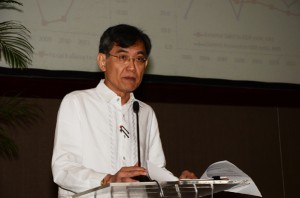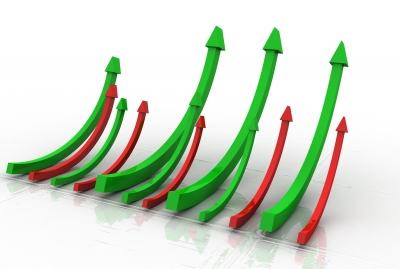 Improved business and consumer confidence particularly in the last quarter of 2012 is expected to help drive Philippine growth from 6% to 7% this year.
Improved business and consumer confidence particularly in the last quarter of 2012 is expected to help drive Philippine growth from 6% to 7% this year.
The 7% growth is even higher than the 6.6% GDP growth in 2012, according to Emmanuel F. Esguerra, Deputy Director-General of the National Economic and Development Authority (NEDA) during the recent PortCalls Cargo Economics Conference in Manila.
Esguerra said last year’s performance was better than initial forecasts, with the Philippines exhibiting the fastest growth in Asia next only to China.
Contributing to this performance is the country’s low and stable inflation contained at about 3%, favorable interest rate and sound banking system, and a sustainable fiscal and external position, he explained.
On the supply side, the services sector accounted for 7.4%; industry, 6.5%; and agriculture, hunting, forestry and fishing, 2.7%.
Of the services sector, transport, communications and storage represented 7.5% in the 2012 GDP growth, followed by real estate and renting at 7.90%.
Government expenditure (11.8%), exports (8.7%) and household consumption (6.1%) fuelled last year’s demand, with exports reaching a record $51.994 billion or 7.6% growth over the $48.3 billion in 2011. The government is maintaining its 10% export growth target for this year.
In December alone, exports rose 16.5% to $3.97 billion, reversing its 18.9% fall in the same month of 2011. This is despite a 5.5% decline in electronics shipments to $1.506 billion. Such performance was the best in Asia, with Hong Kong managing 14.8% growth; China, 14.1%; Vietnam, 14.1% and Thailand, 13.5%
In a separate interview, Sergio R. Ortiz-Luis Jr., President of the Philippine Exporters Confederation, Inc. (PHILEXPORT), said that because this growth is below the original 10 to 11% target, there is a need to adjust the goal to 15% annually to attain $120 billion by 2016, the export target indicated in the Philippine Export Development Plan (PEDP) 2013-2016.
“The improving performance of the electronics sector will help us achieve this revised target,” Ortiz-Luis explained, adding that product diversification program under the PEDP can help push the exports of non-electronics products such as machinery and transport equipment, woodcraft and furniture and fruits and vegetables.
Meanwhile, Philippine imports grew by 4.2% mostly from ASEAN, believed to be a result of the increasing benefits from this regional trade agreement. Other top Philippine import markets are China, US and Japan.
The improvement in the country’s external trade is mirrored by growth in cargo throughput last year, rising 7.8% year-on-year to 90.9 metric tons, while ship traffic was 2.2% more.
Tourist arrivals bridged the four million mark in 2012, and the government expects further tourist influx as the macroeconomic environment is positively sustained.
Esguerra also noted that the country’s improving competitiveness ranking will contribute further to the attainment of the 2013 targets.
In the near term, it is important to pursue policies that will contribute to the country’s goals, he noted. These include stimulating domestic demand, diversifying domestic and external trade, accelerating fiscal spending and strengthening economic relations with fast-growing ASEAN economies.
Specifically on the logistics chain, he cited among other recommendations the need to encourage more infrastructure investments, upgrade and build new transport facilities and implement the National Transport Policy.
He, however, cautioned against challenges and risks such as the uncertainty in the Euro area; the fiscal cliff of the US; possible spikes in global petroleum prices; El Niño and typhoons; delayed or non-implementation of reforms and persistent high unemployment and underemployment in the country.
[copyscape]





